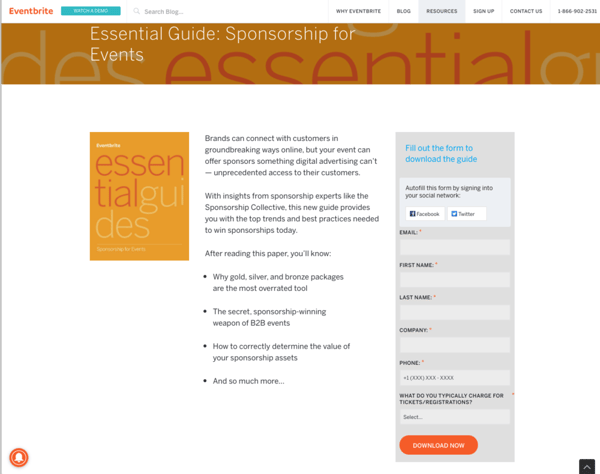Over the past decade the focus of marketing has greatly shifted. We’ve seen shifts in search, social, email, and various other forms of digital marketing. But one thing has become clear: Many forms of marketing (including online marketing) are becoming less and less effective.
At Tobe Agency we focus on helping our clients develop a cost-effective marketing strategy that enables them to capture more customers online. There’s a lot of different components to this strategy, but we wrap it all up in what many people refer to as an “inbound marketing methodology". You’ll also hear this referred to as “demand” or “pull” marketing.
This post is meant for all the business owners and marketers out there who are trying to capture more customers online, but need a comprehensive methodology to shift their mindset from outbound to inbound marketing.
What’s the Difference Between Outbound and Inbound Marketing?
Outbound marketing
I often refer to as “traditional” marketing. Outbound marketing examples include billboards, TV ads, radio ads, direct mail, etc.
The problem:
-
Very sales driven and marketer-centric
In other words, you push marketing messaging out to people who may not want to receive it.
-
Most consumers have had pretty negative experiences with outbound advertising
-
Buys the consumer’s attention, whether or not that consumer wants them to capture it.
An example, you’re watching a popular show on TV and just as the climax comes you cut to… a car commercial. Just imagine your frame of mind when that brand gets in front of you. What’s the first thought?
“Dammit!”
“This is such an annoying commercial!”
Regardless of your reaction, it's probably safe to say that outbound car commercial didn’t leave a good taste in your mouth about the brand.
Inbound marketing
With inbound marketing you publish great content that is relevant to the problem that your potential customer is facing with the goal of having this customer come to you to better understand how to solve their problem.
a) Publishing valuable content on platforms like:
- Website
- Social media pages
b) Google search
- Search engine optimized (SEO) content to enhance search-ability track marketing activities
c) Targeted advertising
- Expose your content to more people who may also be interested in the topic.
- Via social media ad tools - much more powerful than traditional TV and Radio advertising
d) Engaging content
Producing and distributing relevant content is one of the key strategies in inbound marketing to entice your audience and drive interest into your brand and its products/services.
-
Written content: blog post, whitepapers, guides
-
Visual creative content: webinars, videos, pictures, and etc.
An inbound marketing strategy accounts for the fact that some (if not most) of your visitors may not be ready to buy today. But by providing useful content, your brand ends up building a relationship with that potential customer. When they are ready to buy, you’ve set yourself up as best as possible for the sale.
An example of a company that does inbound marketing well:
Eventbrite is a ticketing platform and most people think their main customers are the people buying tickets on their sites. But their main customers are actually event promoters and organizers, as they use the ticketing platform for big events.
So what does Eventbrite do to get more event promoter and organizer leads?
They put out content that would be useful to their target audience.
For example, they have a guide on “Sponsorship for Events,” which provides really useful information on how promoters and organizers can secure sponsorships.
In order to download this content, you have to provide your contact information. This is also known as "gated-content"
 Source: Eventbrite.com
Source: Eventbrite.com
And just like that, Eventbrite received a warm lead from someone who is probably an event promoter or organizer (otherwise, why would they be downloading a guide on sponsorship for events?).
So what seems like a better way to put your brand in front of a customer? A car commercial that interrupts the content you really want to consume? Or a useful guide (like Eventbrite's) that you found on your own while you were doing research? With inbound marketing, useful content effectively replaces outbound advertising.
Why Inbound Marketing?
Inbound marketing isn’t a new concept. However, the need for inbound marketing has increased significantly because anyone can get the information they need online.
Before the Internet became mainstream, customers relied on salespeople to give them information on a company or product. Back then, salespeople had all of the information and the consumers were at the mercy of the salesperson. Now, that dynamic has been turned on its head – customers already understand their options and possible solutions to their problems before they connect with a salesperson.
The Internet and its abundance of information is one of the key reasons why inbound marketing is needed today. However, there are other technological factors that may have a greater influence on your marketing strategy. Simply put, technology has rendered a lot of the traditional outbound methods much less useful.
For example, Caller ID has reduced the effectiveness of cold calling (in fact over 200 million Americans have registered their phone numbers on the FTC’s “Do Not Call” list). Spam filters have reduced the effectiveness of cold emailing. Even outbound digital marketing like banner/display ads are getting blocked by ad blockers.
All of this points to the fact that inbound marketing is a much more effective lead generation methodology that outbound marketing.
Here’s the biggest reason why you should focus on inbound marketing: Businesses receive 54% more inbound leads than outbound leads.
Who Is Inbound Marketing Best For?
Applying an inbound marketing methodology can work for almost type of business, but here are a few characteristics of businesses that I think it works particularly well for:
1. Products/services that have a long consideration period/sales cycle
Inbound marketing is great for those who have a really long sales cycle. A big component of inbound marketing is lead nurturing, from a stranger to a lead, and a lead to a paying customer.
You nurture that stranger along to a paying customer by producing and distributing content that is relevant to each stage of the consideration period. By putting the right content strategy in place, you effectively allow your leads to “self serve” the content they want relative to where they are in their buying stage. This means that when the lead is actually ready to talk to a salesperson, they are a warm (or even a hot) lead.
B2B companies that sell items, like enterprise software, are good examples of companies that could benefit from a strategy like this.
2. Brands that have a lifestyle component or social mission
Inbound marketing also works for B2C companies, especially ones that have a truly unique value proposition. For example, sustainable and environmentally-friendly brands are all great examples of companies that can build a solid inbound marketing strategy.
Most of these companies have a social component to their brand. So sharing digital content focused on their social contributions is an awesome strategy.
Content for these B2C businesses is less educational and more lifestyle driven.
Whether you develop a series of video content on how the company sustainably sources its materials or a blog post on how the company owners provide thought leadership on environmental issues, this is all content that will attract a consumer that identifies with the mission of the brand.
3. Brands that have complicated services/products
Content-driven inbound marketing is perfect for these types of businesses. A lot of times potential consumers aren’t ready to make a purchase. They want to do more research, but they’re not quite ready to talk to a salesperson yet (this is especially true with Millennial buyers).
This is why having creative content drive your marketing strategy becomes more important. Videos and webinars are two great content formats you can harness to help potential customers understand how your complicated service/product could potentially help them with their problem.
Additionally, educational content also helps your sales team, as your lead has a little bit of background on your product/service prior to the sales team reaching out.
Have you considered adopting an inbound marketing methodology to help you capture more customers online? We’d love to hear how you made the switch from outbound to inbound!
.png)

-1.png)
.png)